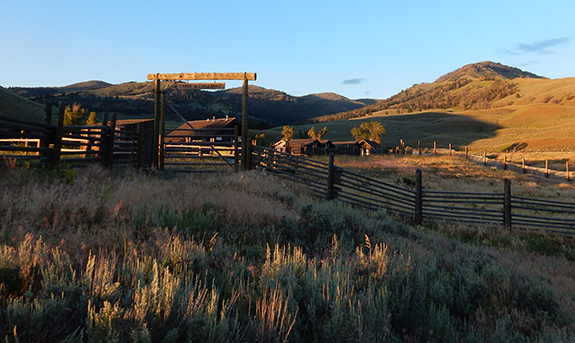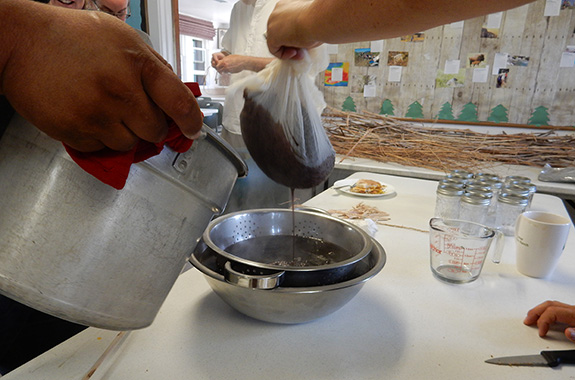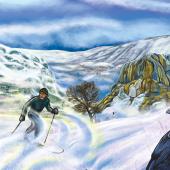Good Medicine
Discovering nature’s bounty.
You probably know that dandelion leaves and flowers are edible, but did you realize how many essential nutrients they contain, or that their dried roots can be made into a tea that can help clear the lungs and is also good for cancer patients and diabetes? What about other plants you pass right by when you're out and about? Those rose hips you walked by are high in vitamin C; the leaves and petals of an oxeye daisy can be eaten on a salad; or you can crush up the leaves of yarrow to make a poultice to stop the bleeding of an open wound. It’s amazing how much help the natural world is willing to give us if only we know how to use it. We are so disconnected from this type of knowledge in our modern go-gadget world, but at one time, a lot of these natural remedies were more commonly known and even essential to survival. Lucky for us, there are people out there who still learn this knowledge first-hand from their elders, and are willing to pass it on to others.
Yellowstone Forever’s class, "Native American Plants and Their Uses," is taught by Linda Black Elk, an ethnobotanist and professor at Sitting Bull College. She starts out class by discussing how important family is to her, introduces her husband Luke, and lets us know that her kids will be around and helping out with our class on occasion. Linda then talks about the legacy behind her sons' names, and moves on from there to the role plants have played in her life, how she learned most of her plant knowledge from her grandma, and from stories told by elders. She also stresses to us the importance of being respectful of the plants, informing us that they are sentient beings, and that it’s a tradition to express gratitude for their use.
The next morning, after Luke and Linda lead a thank-you song-prayer to the creator, we load the bus and head out to the forest near Jardine. Along the way, we discuss a wide variety of topics, including Lakota customs and stories, and the NoDAPL (Dakota Pipeline) resistance movement, which Linda was on the front lines for, trying to protect the plants that were in the path of the pipeline construction.
Once out into the field, we find different plants and discuss their many uses. I furiously scribble notes and try to keep up on the plethora of knowledge that Linda has to impart about the shrubs and wildflowers we come across. Some plants have stories that are important to pay attention to. For example, the rose hips have a tale about the coyote and the itchy-ass berries—let’s just say that it’s important to de-seed those rose hips before eating them, or you’ll end up with an itchy butt like the greedy coyote who ate too many at one time.
We ID a bunch of different species, talk about their unique properties, dig up some Yampah roots to try their carroty goodness, and also make sure to say a thank-you to the plants by spreading some tobacco. We end the outing by collecting fireweed and sticky geranium flowers in paper bags for the salve we plan to make back in the classroom at the Lamar Buffalo Ranch.

Lamar Buffalo Ranch, basecamp for Yellowstone Forever field courses
While it's pretty awesome learning about all the different uses of the plants that surround us, it’s the process of how to make the salves, lip balms, syrups, and elixirs that I’m most excited about. We watch intently and start asking questions as Linda pours equal amounts of olive and almond oil over the flowers we'd collected the day before, then we put it on simmer to cook slow in a crockpot as we head back out into the field for some more plant ID and discussion.
We're told that pine sap is antimicrobial and can be used on wounds in a pinch, willows have aspirin in their bark (peel and eat the bark or dry and use as a tea for inflammation or headaches), and pennycress seeds can be ground up and made into a mustard. We eventually make our way back to campus to finish making our salve and lip balms. It’s amazing how simple the process is: a mixture of oils and plant matter, cooked low and slow, strained, then mixed with beeswax, and the addition of a few drops of essential oils, ends up yielding high-quality balms and salves.

Mixing up an elixir of native plants
Back in the field the next day, we talk about how science is now proving what the Lakota people already knew through local lore about specific plants. One example is the sage bundle, typically used for smudging, which has been found to kill bacteria. This type of ceremonial sage (Artemesia vulgaris) is an effective cleansing agent that can easily be made into a natural all-purpose cleaner. It’s mind-boggling to find out how many uses our native plants have; stinging nettle is great for arthritis and inflammation (whip the afflicted area, or dry young leaves and make into a tea); licorice root is good for asthma and seasonal allergies (dry the root and make into a tea, but not good for people with cataracts); arnica works wonders on bruises and strains and is commonly made into a salve; broadleaf plantain is used in lip balms and salves, and the leaves can be used as a bandage or made into a poultice for bug bites, bee stings, and burns. Every time I walk by plantain now, I think about what a useful plant it is, and it grows everywhere, on the edges of every trail and even outside the back door of the O/B office in downtown Bozeman.
Then there are the berries—most are high in antioxidants, like the service (or june) berry, which we find out can be eaten directly, made into pemmican, or both the leaves and berries can be made into a tea. We learn that black elderberry is the most antiviral plant out there and end up making an elderberry elixir, which is a great preventative to use during cold and flu season. We discuss some of the traditional foods that are made from different berries and how our palates have changed over the years. Some of these native foods probably won’t taste that great to us now, mostly due to our mass consumption of sugars. Bitterness is actually good—that’s where the medicine comes from! If we can learn to embrace the bitterness, we can open ourselves to using these natural remedies that already exist.
One heart-healthy item we learn how to make is fire cider—basically apple cider vinegar on steroids—which has been proven to lower blood pressure. The fire cider is fermented for three weeks with hot spicy things like garlic, turmeric, ginger, peppercorns, and other items. Once strained, it’s used traditionally as a daily tonic to keep immune systems strong, and I can see why. It has quite a kick to it—a shot in the morning will get you started out right.

Jars of immune-system-boosting fire cider, just in time for cold season
Leaving class is a touch bittersweet; it’s hard to say goodbye to the new friends we’ve made during our time here at the Lamar Buffalo Ranch. On the other hand, we all have some great items to take home with us: elderberry elixer, fire cider, a bunch of teas that are good for various ailments, plus the lip balms and hand salve. And the most valuable of all is the “old knowledge” we’ve gained on how to use the plants that grow all around us. I’m excited to take this new information with me and to start using native flora to support my own nutrition and health.
For more information about Yellowstone Forever courses, check out yellowstone.org.












